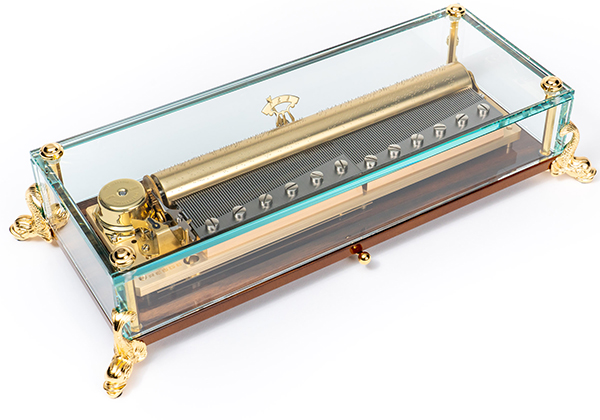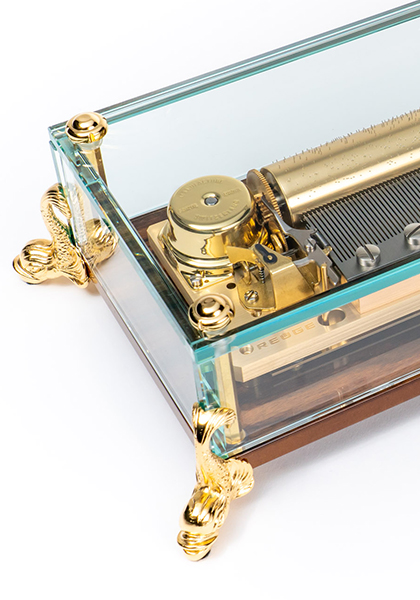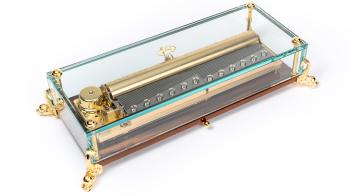At Reuge, there’s no such thing as an unusual job. From the plumassière who creates a symphony of colourful feathers on musical birds, to the person who installs anti-vibration dampers (thin reeds that improve the sound) or the acoustic director with a thorough knowledge of the therapeutic applications of music – these are all a normal part of life at Reuge. Musical automata are not just a feast for the eyes and the ears, they can also exert a beneficial effect on the whole body.
Hypersonic therapy
From the magical incantations of shamans to music therapy in classical Antiquity, music has been used to heal the sick for millennia. Reuge is very familiar with its benefits. The company’s acoustic director aims to implement the research of Tsutomu Oohashi, a Japanese scientist and composer, who discovered that high frequency sounds that are inaudible to humans can lead to “activation in the deep-lying structures” of the brain. This can result in a variety of physiological, psychological and behavioural effects, including an improved immune response and lowered stress markers. These benefits are known as “hypersonic effects”. Other research has shown that, when subjects listen to specific kinds of music, zones of activity in the brain expand, and patients experience the entire range of frequencies, even the frequency associated with deep sleep, while remaining awake.

What do music boxes and Balinese festivals have in common?
The components of high-frequency sounds, the very sounds that can have such a beneficial effect, have to be combined with low and medium frequency sounds to have an effect. But there are very few sound sources capable of producing such a broad range of frequencies. Tropical forests produce them naturally (just close your eyes and dream...). Other sources are symphony orchestras, big pipe organs, the Gamelan music of Java and Bali, and some music boxes – ones with more than 72 notes (ideally 144). This makes music boxes, which produce a range of frequencies from 3.75Hz to 100Hz, “the only portable therapeutic method”.

In Japan, a number of hospitals, as well as wellness centres, spas and sports and educational institutions, are using Reuge musical automata. More than 5000 cases with positive outcomes have been reported. In order to maximise the impact, the automaton is placed in direct contact with the part of the body being treated. Sound waves travel particularly well “through the bones”.
Music boxes are better than digital sound
As Reuge’s acoustic director points out, musical automata are far superior to digital technology in terms of the range of frequencies they produce. There is currently no digital medium capable of recording and reproducing sounds with such a wide amplitude. The ubiquity of smartphones and the internet has reduced sound quality requirements and led to a dearth of research in the area.
One area that is still being researched, however, is the best kind of sound repertoire to use. The distribution of frequencies varies depending on the composition, as does tempo, rhythm and other elements. Western classical music, which features a variety of rhythms, melodies and harmonies, is recognised as being the best for brain development. The regular rhythms of baroque music stabilises brain frequencies, and melodies in a descending scale are calming and can help to induce sleep. In any case, as Stendhal said, “Good music never deceives; it penetrates straight to the soul and seeks out the pain that devours us.” How very true.





